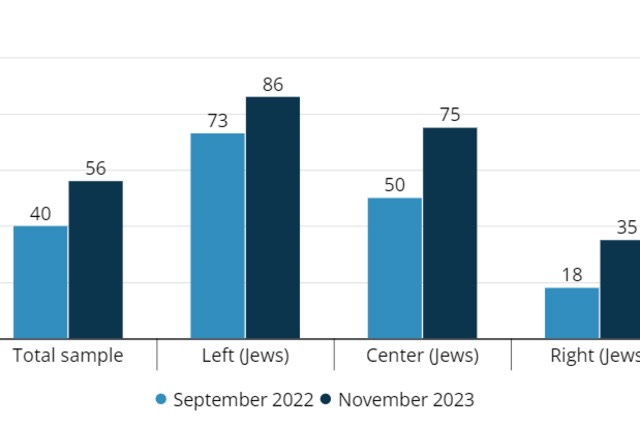DAY 50 OF THE GAZA WAR: First Two Groups of Hostages Released After Delays, Two More Groups Expected to Be Released
Tel Aviv Diary • November 25, 2023
I believed I had exhausted my entire reserve of tears for 2023 until I viewed the video of nine-year-old Ohad Munder racing through the hospital to hug his dad. Friday was a strange day in Israel. In Tel Aviv, it seemed like there had never been a war. Dizengoff Circle was packed, malls were full, and people were everywhere. The major difference was the increased presence of people seen with modern assault weapons, mostly soldiers on short leaves, walking around in civilian clothes.
As 4 PM approached, everyone was glued to their TV sets, waiting anxiously. Nobody trusted that the hostages would actually return home. Hamas delayed the initial hostage release, exacerbating the anxiety in a country in dire need of a national prescription for Prozac. Finally, after a two-hour delay, the hostages arrived at the Egyptian border. Following a brief stop at Hatzerim Airbase, the newly freed hostages were flown to hospitals to reunite with their family members, all anxiously awaiting their return.
Among those set free were ten Thai workers and one Philippine worker, released as a result of intervention by the Iranian government.
On Saturday morning, photos were shared by several relatives of former hostages reunited with their families. These pictures provided Israelis with a glimmer of joy amid the chaos and sadness of the past six weeks.
By Saturday afternoon, people were once again fixated on the news. This afternoon (4 PM) was when the second group of hostages, mostly children, was supposed to begin the process of being released. Tension rose as hours passed, and it became clear there was a problem. Hamas announced a delay in the release, falsely accusing Israel of not keeping their side of the bargain. It was clear Hamas was engaging in psychological warfare.
Both Egypt and Qatar exerted tremendous pressure on Hamas to proceed with today’s agreed-upon release and resolve differences afterward. Finally, a little after 9:00 PM, it was announced by Qatar and Egypt that the issues had been resolved and the release would proceed. Reports indicated that President Biden had called the Emir of Qatar that evening, urging him to resolve the problems. The hostages finally arrived in Israel just after midnight. One of the hostages is wounded in a “complicated” medical status.
One issue seemed to be that Hamas had not adhered to the agreed stipulation to release families together (women and children). Tonight, one mother was left behind while the child was released. As a result, Israel deviated from releasing prisoners based on the duration of their imprisonment. The agreement stipulated that both sides would attempt to uphold these provisions. The parties settled that overnight, negotiations would be conducted to resolve these differences for future releases. But in reality, as I mentioned earlier, the delay was psychological warfare against Israel.
Overall, the ceasefire has held in both the North and South. An Iranian drone attacked an Israeli-owned ship in the Arabian Sea. Today, there was an attempted drone attack launched toward Eilat, which Iron Dome intercepted. This failed drone attack was likely fired by the Houthis in Yemen. Tonight, an IAF fighter jet intercepted a drone headed for Israel over the Red Sea.
The New York Times published a particularly problematic article today. The headline, also pushed in a notification, read: “Gaza Civilians, Under Israeli Barrage, Are Being Killed at Historic Pace.” The problem with the article’s accuracy starts with using unverified figures provided by Hamas to report the number of women and children killed. Women and children have undoubtedly been killed, but the actual numbers are unknown. The only source that publicized numbers of wounded in Gaza is the Hamas-run Health Ministry, known for its history of falsehoods and extreme exaggeration. So why does this NY Times article publish their numbers as fact? The article also fails to mention important details, such as Israel’s insistence upon the evacuation of these densely populated areas before beginning attacks, aimed at destroying Hamas’s terror tunnels below — which requires large bombs.
A few interesting polls came out over the weekend. One of the most notable shows significant growth in support for amending the Nation-State Law — i.e., the law passed by the previous Likud government providing unique status to Jewish citizens in the state of Israel. Overall, 56% of Israelis now support the change, a direct result of contributions from both Druze and Arab Israelis to the war effort, both in the IDF and civil relief operations
.
Another poll, by Ma’ariv, asked about voting preferences — if elections were to be held now. Results showed the Likud continues to lose strength, and in this poll, the Religious Zionist Party, led by Smotrich, does not make it into the Knesset.









